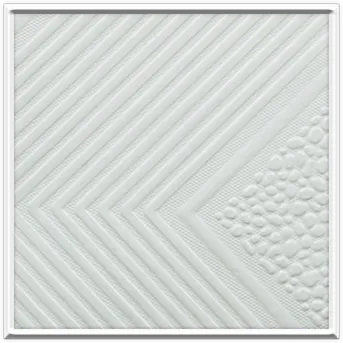Oct . 31, 2024 22:42 Back to list
Laminated Gypsum Boards for Enhanced Durability and Aesthetic Appeal in Construction
Laminated gypsum board, also known as laminated drywall or gypsum board, has emerged as a significant innovation in the construction and building materials industry. This versatile product combines the inherent strength of gypsum with the aesthetic appeal of various laminated surfaces, making it a preferred choice for both commercial and residential applications.
At its core, laminated gypsum board consists of a gypsum core that is sandwiched between two layers of high-quality film or other types of lamination. This combination not only enhances the durability of the board but also provides a smooth, finished surface that can be painted or decorated without the need for additional treatments. The laminated surfaces come in a variety of colors, textures, and patterns, allowing architects and interior designers to create visually appealing spaces while maintaining functionality.
One of the key advantages of laminated gypsum board is its lightweight nature. Compared to traditional wall materials, these boards are easier to handle and install, which significantly reduces labor costs and time on construction sites. In addition, the boards are typically resistant to moisture and mold, making them a suitable option for areas prone to humidity, such as bathrooms and kitchens.
Furthermore, laminated gypsum board contributes to improved acoustic performance within a space. The dense gypsum core helps to absorb sound, reducing noise transfer between rooms and enhancing overall comfort for occupants. This feature is particularly valuable in multi-family housing units, offices, and educational institutions where noise reduction is a priority.
laminated gypsum board

Sustainability is also a noteworthy attribute of laminated gypsum board. Many manufacturers prioritize eco-friendly practices, utilizing recycled materials and producing boards that are free from harmful chemicals. This aligns with the growing trend towards sustainable building practices, enabling construction projects to attain green certifications.
While the benefits of laminated gypsum board are numerous, it is also essential to consider its limitations. For example, while it offers good impact resistance, it may not withstand heavy strikes or the wear and tear typically associated with high-traffic areas. Proper installation and maintenance are crucial to ensure longevity and durability.
In conclusion, laminated gypsum board represents a modern solution in the realm of construction materials. With its combination of aesthetic versatility, ease of installation, acoustic benefits, and environmental consciousness, it provides an effective option for a wide range of building projects. As the demand for innovative and sustainable materials continues to rise, laminated gypsum board is likely to maintain its relevance and popularity in the industry.
-
Quality Ceiling Trap Doors & Access Panels | Easy & Secure AccessNewsAug.30,2025
-
Durable Ceiling T Grid Systems | Easy InstallationNewsAug.29,2025
-
PVC Gypsum Ceiling: Durable, Laminated Tiles for Modern SpacesNewsAug.28,2025
-
Pvc Gypsum Ceiling Is DurableNewsAug.21,2025
-
Mineral Fiber Board Is DurableNewsAug.21,2025
-
Ceiling Tile Clip Reusable DesignNewsAug.21,2025







